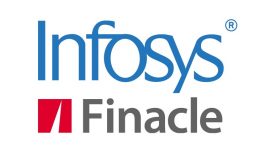Digitalisation a must-have for lending in a post-COVID world
The coronavirus pandemic has affected and disrupted every aspect of financial services, causing a stutter or a stop to processes considered both essential and commonplace. The world of lending is no different, and in a world after COVID-19, the industry is set to experience some shattering changes.
Banks have the technology in place to manage high value and low volume lending, says Rajashekara Maiya, vice president, global head of business consulting and product strategy at Infosys Finacle. Lenders are more than prepared for figures from £250,000 upwards. Yet things can become difficult when that lending paradigm shift towards low value in high volumes.

Businesses will want to kickstart their recovery after COVID-19
In a post-COVID world, Maiya predicts that there will be high demand for low-value loans from people trying to recover their businesses and livelihoods, as well as those looking to return to lifestyles that were available before the pandemic.
“Most of the retail sentiment now is to cut back on non-essential spending. People have suspended buying cars, houses, exotic holidays and more. All these things are completely out of their purview for perhaps a year or more.”
While consumers will be looking to kickstart their lives, many businesses will also be looking to take out loans to keep themselves afloat, especially in sectors adversely affected by the retail slowdown.
Maiya states that not only will this influx challenge each and every bank from a scalability perspective, the social distancing measures which have become a hallmark of the pandemic response underline an already-occurring trend in the banking space.
Consumers and regulators were already putting pressure on lenders to reduce the amount of contact time with potential customers needed for the issuance of credit. Now with many people unable to visit their bank, the ability to offer a low-touch lending process has become critical.
“Everything from your origination process to your credit checks and approvals have to come down in time,” says Maiya. “Not only that, the pressure to digitise in a big way is very real. The time it takes to onboard a customer needs to drop even further. We have seen it move from six or seven days to less than a day, and in some cases under 30 minutes.”
The desire for speed in origination, combined with the expected rise in volume, means that it will be next to impossible for a bank to operate efficiently using manual processes, he adds. “This is where you must use machine learning, customer analytics, automated eligibility checks.”
The ability to set a range of criteria within which loans can be automatically approved by a system can dramatically reduce overload on a bank’s internal processes at a time when branches are closing and staff unable to perform to maximum capacity.

Banks may start to wonder at the stability of their infrastructure
While a period of instability in the market means that many chief technology officers may be glancing at their infrastructure spend and looking to settle back onto tried-and-true internal systems, Maiya argues that there is no better time for a financial institution to go digital.
“This is a corporate decision that needs to be made for many banks if they want to survive,” he says. “Before COVID, banks were launching new entities to test out digital strategies, offering skeleton services to showcase that while they have legacy, they are making some slow transformation from one to the other.
“That transformation now needs to happen at speed. There needs to be no distinction between a legacy bank and a digital bank.”
What steps can lender made now to ensure that they adapt to a post-COVID world and can sit at the heart of a dramatic change in the lending ecosystem? Adopting a cloud-first approach is key, argues Maiya, as well as investments into the application and implementation of automated processes and machine learning to provide insights into customer eligibility and enable rapid origination and processing.
“Fortunately or unfortunately, this is the time for banks to go digital. You cannot get a better opportunity than this to position yourself as key to a new market dynamic.”
SPONSORED INSIGHTS
For more visit: https://www.edgeverve.com/finacle/












































